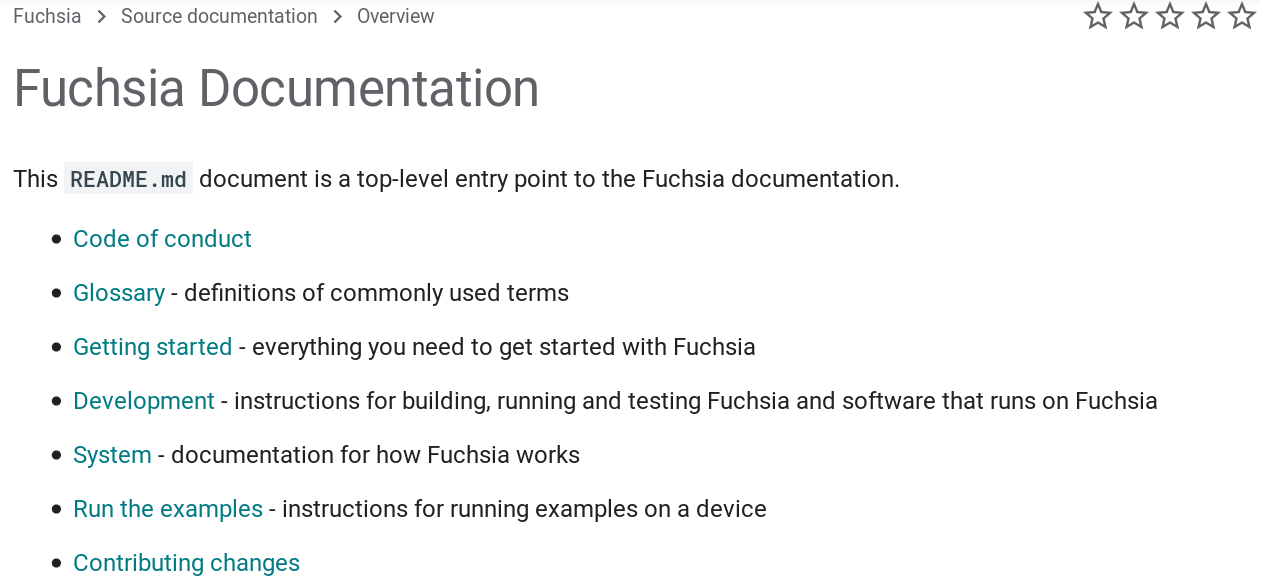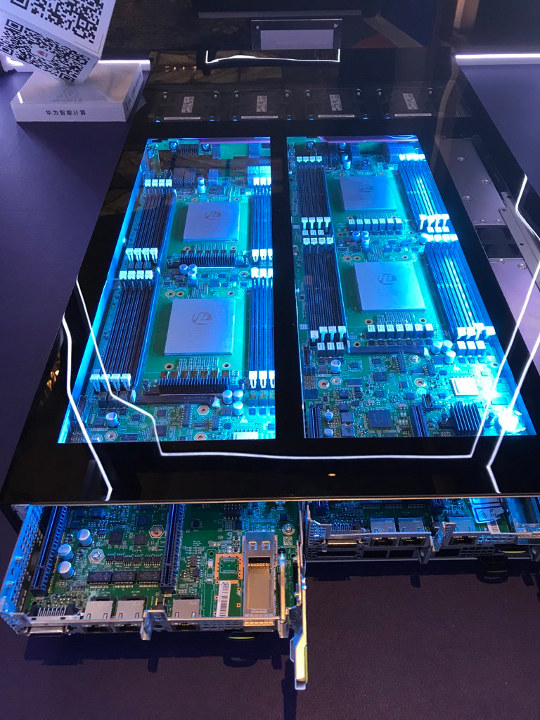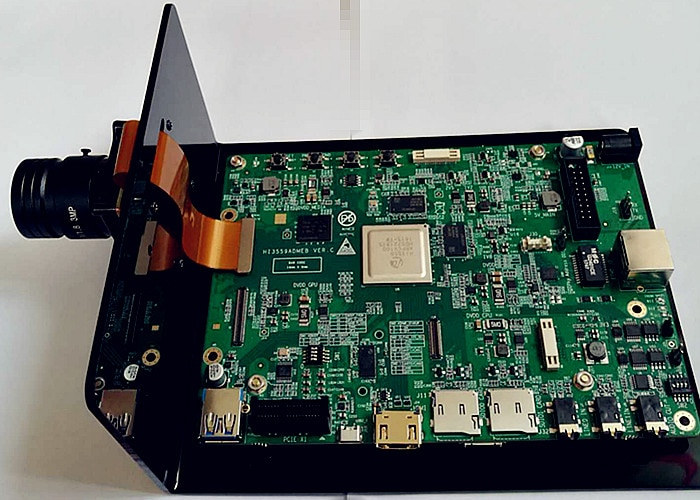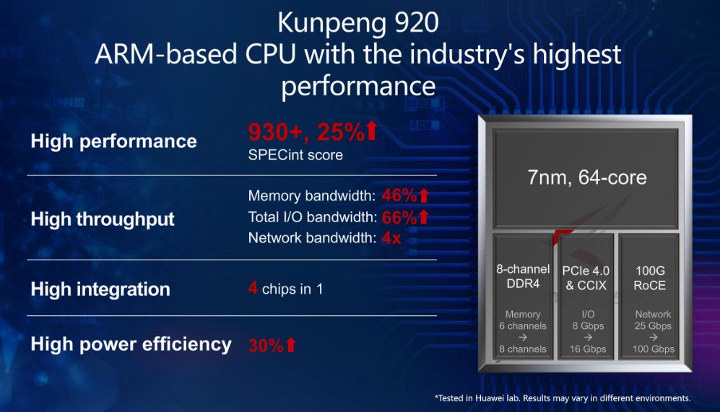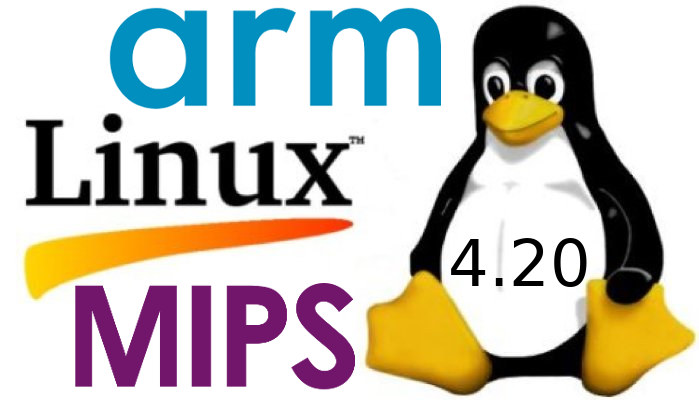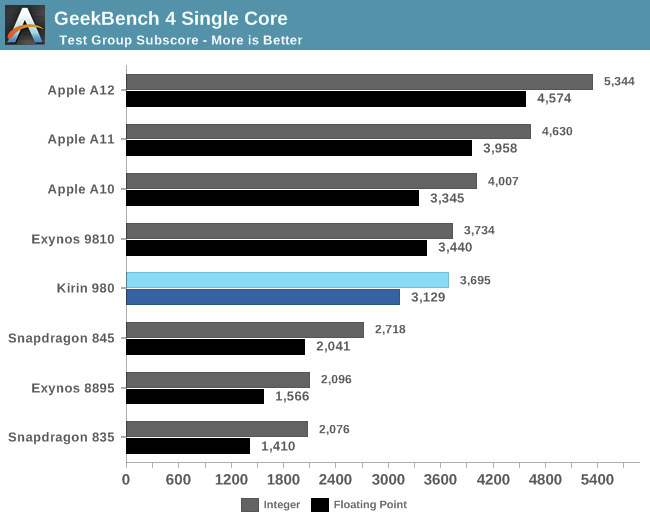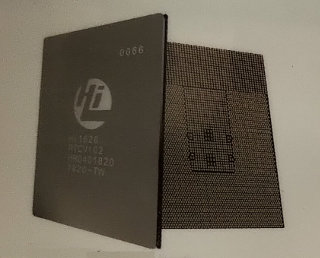Google has been developing Fuchsia open source operating system based on Zircon kernel for several years. It’s still unclear what’s the end goal. Will it replace Android or/and Chrome OS, ditching the Linux kernel for Zircon in the process? We don’t know, and Google claims its an experimental endeavor. Only the future will tell. We’ve had access to the source code since 2016, but Google has now launched a dedicated developer website for Fuchsia: fuchsia.dev This is year 2019, and Google being a Western company it should not be surprising the first part of the documentation is a Code of Conduct, but there’s also plenty of technical documentation with a glossary, getting started guide, building instructions, an overview of the OS, code samples, and instructions to contribute either by testing or submitting changes to Gerrit. Fuchsia is strictly a 64-bit operating system at this stage with support for Arm64 and […]
Huawei Launches 2U 4-node Taishan X6000 V2 Server with Kunpeng 920 Arm Processor
Back in January, Huawei announced Kunpeng 920 64-core Armv8 server processor as well as three Tianshan servers based on the SoC. But a recent tweet from James Lin, Vice director, Center of HPC, Shanghai Jiao Tong University, claims Huawei launched a 2U 4-node “Taishan” server with Kunpeng 920 (Hi1620) Arm chip a few days ago. That probably means Huawei is now ready to take orders for their new Arm servers. The server pictured above appears to be Taishan X6000 V2 with the following specifications: Form Factor – 2U, 4Node high-density server Server Nodes – Up to 4 XR320 servers with X6000 universal chassis or 4 XA320 V2 servers with X6000 super chassis Power Supply Units 2x 1,500W enhanced hot-swappable AC PSUs for XR320 server nodes 2x 3,000W hot-swappable AC PSUs for XA320 V2 server nodes supporting 1+1 redundancy Power Supply – 100V to 240V AC; 24V DC Fan Modules – […]
HiSilicon Hi3559A Board Enables Smart 8K Camera Development
HiSilicon Hi3559A 5-core Arm Cortex A73/A53 camera processor was announced in 2017 with support for 8K 30fps or 4K 120fps video recording, as well as an integrated dual core neural network accelerator (NNA). It should not be confused with the earlier Hi3559 4K 30 fps processor, or the newer Hi3559C that looks to be the same as Hi3559A without the NNA. Nevertheless, today I was lead to check about Hi3559A processor once again, and I could not find any camera that you can just buy and use today. I still found some upcoming Hi3559A products with OBSBOT Tail AI camera offered for as low as $509 on Kickstarter (delivery scheduled for April 2019), one 4K 120fps OEM? camera from GKuvision, as well as an HiSilicon Hi3559A development board for 8K camera applications, which I’ll look into more details in this blog post. HI3559AV100DMEB specifications: SoC – Hisilicon Hi3559A V100 with […]
Huawei Kunpeng 920 is a 7nm 64-core Armv8 Server Processor
We’ve seen several Armv8 processors for the datacenter launched in recent years from companies like Cavium – now part of Marvell – and Ampere. Another company now joins the fray with Huawei having just introduced their Kunpeng 920 64-core Armv8 processor manufactured with a 7nm process, and offering 8-channel DDR4 RAM, and fast interfaces such as 10GbE and PCIe 4.0. Kunpeng 920 features and specifications: CPU – 64x Armv8 cores clocked at up to 2.6 Ghz delivering a 930 SPECint score Memory I/F – 8x DDR4 @ 2933 MHz for 6 to 8 channels memory Storage – 16x SAS/SATA interfaces High Speed Interfaces – 40x PCIe 4.0 including 16 that can be used for CCIX (Cache Coherent Interconnect for Accelerators); 640 Gbps total bandwidth Networking – 2x 100G RoCE (RDMA over Converged Ethernet) Process – 7nm process The company customized their ARMv8 cores in order to improve performance by optimizing […]
Linux 4.20 Release – Main Changes, Arm and MIPS Architectures
After Greg K-H handling Linux 4.19 release, Linus Torvalds is back at the helm, and released Linux 4.20 just before Christmas: Let’s face it, last week wasn’t quite as quiet as I would have hoped for, but there really doesn’t seem to be any point to delay 4.20 because everybody is already taking a break. And it’s not like there are any known issues, it’s just that the shortlog below is a bit longer than I would have wished for. Nothing screams “oh, that’s scary”, though. And as part of the “everybody is already taking a break”, I can happily report that I already have quite a few early pull requests in my inbox. I encouraged people to get it over and done with, so that people can just relax over the year-end holidays. In fact, I probably won’t start pulling for a couple of days, but otherwise let’s just […]
HiMedia S1 TV Dongle Runs Android TV, Supports Netflix 4K
HiSilicon Hi3798MV200 media processor was announced in 2016 as a cost-down version of Hi3798CV200 processor for 4K TV boxes, and the next year I reviewed HiMedia Q30 TV box powered by the processor. Video playback was great with good 4K support and excellent video quality, although WiFi could have been better. Anyway, the processor has been around for a while, so yet another model with the SoC would not normally be newsworthy. Except HiMedia S1 is a little different, as the company confirmed the TV box is part of Netflix Hailstorm device scaling program meaning it officially supports Netflix 4K out of the box. HiMedia S1 specifications: SoC – HiSilicon Hi3798M V200 quad-core Arm Cortex A53 processor with Arm Mali-450MP GPU supporting OpenGL ES2.0/1.1, OpenVG1.1, EGL System Memory – 1 GB or 2 GB DDR3 Storage – 8 GB eMMC flash Video & Audio Output – Micro HDMI 2.0a up […]
HiSilicon Kirin 980 Benchmarks Show Cortex A76’s Impressive Performance & Efficiency Improvements
HiSilicon Kirin 980 was the first processor announced with Cortex A76 cores, which were said to deliver laptop-class performance, with 35% performance improvement over Cortex A75, and around twice the performance of Cortex A73 cores thanks to improvements, and a higher CPU frequency up to 3.0 GHz. But now that Huawei Mate 20 / Mate 20 Pro smartphones are out, various reviews have been published, and Anandtech was mostly able to confirm the claims. In most case, actual results were inline with expectation despite Kirin 980 clock speed being “limited” to 2.6 GHz. Looking at GeekBench 4 single-thread integer and floating-point scores, the Cortex A76 core based Kirin 980 is significantly faster than Cortex A73 powered Snapdragon 835 clocked @ 2.45 GHz. Precisely: 1.77x faster in the integer score,and 2.21x faster in the floating point score. SPECS2006 confirmed the good performance with 1.89x higher integer score, and 2.04x faster for […]
HiSilicon Hi1620 Server SoC to Features up to 64 Arm “Ares” Cores
A few years ago we covered Hisilicon D02 server board powered by the company’s Hip05 SoC with 16 or 32 Arm Cortex A57 cores. I had not seen any updates since then myself, but HiSilicon has released new “TaiShan” Arm based server SoCs every year, and recently unveiled Hi1620, the world’s first 7nm datacenter Arm processor, featuring 24 to 64 Arm “Ares” cores clocked at up to 3.0 GHz. Ares cores are supposed to greatly improve single thread performance in order to compete with x86 server chips. HiSilicon Hi1620 processors specifications: CPU – 24 to 64 Ares ARMv8.2 cores clocked at 2.4 – 3.0 GHz Cache – L1: 64KB I-cache, 64KB D-cache; L2: 512KB private per core, L3: 24-64 shared among cores (1MB/core) Memory – 8x DDR4 channels up to 3200 MHz Interconnect – Coherent SMP interface for 2S & 4S, 3 ports up to 240 Gbit/s per port I/Os […]


